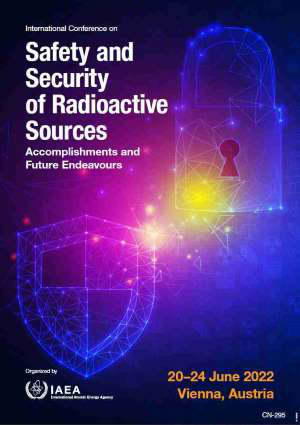Speaker
Description
REGULATORY BODY STAFFING ESTIMATION
de la Fuente Puch A.1, Pacheco Jiménez R.2, Florentín Cano, R.3, Gavidia Valle, O.4,
Lopes Quadros, A.5, Munive Sanchez. M6
(1) Dirección de Seguridad Nuclear, DSN-ORSA, Cuba
(2) International Atomic Energy Agency, Viena, Austria
(3) Autoridad Reguladora Radiológica y Nuclear, Paraguay
(4) Dirección de Protección Radiológica, El Salvador
(5) Comissão Nacional de Energia Nuclear, Rio de Janeiro, Brasil
(6) Instituto Peruano de Energía Nuclear, Perú
andres@orasen.co.cu
Abstract
The regulatory body (RB) acts as an essential barrier to guarantee the safety of radiation sources. It is an important component among all the institutions involved in a strategy of defense in depth (INSAG 27).
Most of the accidents occurred were result of inadequate safety culture and human issues, either due to lack of education and training or incomplete staff that generate stress and lack of attention. People make mistakes; it is unrealistic to believe that they can be completely avoided. Nevertheless, errors can be reduced and measures adopted in order to prevent that unadverted events develop into accidents. The availability of sufficient staff in the RB, contributes to reinforce the defense in depth. Additionally, it is important that the RB embodies and displays a safety culture that guarantees the necessary impact of its regulatory mission. This will serve as an example to the licensee organizations among which it promotes a solid safety culture.
This work provides an unpublished methodology that guides governments and regulatory bodies in estimating the staff needed in the RB to fulfill its roles and responsibilities and therefore allowing to accomplishing with requirement 18, Staffing and competence of the regulatory body, GSR Part 1 (Rev. 1). The methodology is based on the number of facilities and activities to be regulated, and takes into account the maturity of the regulatory control in each country. Its application is recommended whenever the number of facilities and activities changes or the functions and responsibilities of the RB are modified, or because there have been substantial changes in the staff of the RB without the application of a proper staff renewal policy.
The methodology is based on estimating the staff needed to perform the regulatory functions assigned to the RB by estimating the number of man-days per year needed to perform the regulatory functions assigned to the RB, which will depend on the education and training of the staff. Once the number of man-days per year needed to accomplish all functions is estimated, it is divided by the number of working days per year, which depends on each country, thus obtaining the number of people needed in the RB. The number of man-days per year required to perform the regulatory functions is estimated from two components: (1) The number of man-days per year required to fulfil the basic and support functions of the RB that depend on the inventory of existing radiation sources in the country and; (2) the number of man-days per year required to fulfil the rest of the functions. All regulatory functions should be subject to a graded approach so that, while the descriptions of these functions are generic, the degree of application will differ according to the types of facility or activity, the degree of compliance of the users and the available resources of the RB.
The methodology was developed in the framework of the IAEA Technical Cooperation project RLA9084: Strengthening the Regulatory and Radiation Safety Infrastructure (TSA1).
Keywords: Regulatory body staff.
Thematic area: Regulatory aspects.
| Country OR Intl. Organization | Cuba |
|---|

